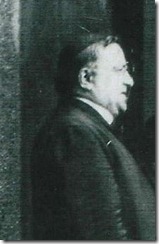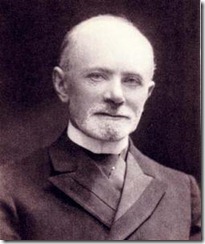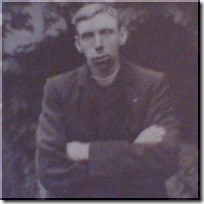In the early 20th century, the Roman Catholic Church had its own secret police. A zealous Vatican functionary, Monsignor Umberto Benigni, set up a group of trusted clerical informers, called the Sodalitium Pianum, to spy on priests and even bishops suspected of heresy. Benigni's ecclesiastical smersh even had its secret code and pseudonyms: then-reigning Pope Pius X was "Lady Micheline," and the Vatican Secretary of State, Cardinal Merry del Val, was "Miss Romey."
 The target of Benigni's agents was the heresy of modernism—a broad term encompassing the efforts of certain scholarly priests and laymen to bring Catholic teaching into line with contemporary scientific and philosophic thought. In 1921, long after the leading modernists had been excommunicated, Pope Benedict XV sensibly suppressed Benigni's spy ring. The memory of modernism has been kept alive, however, by a solemn oath against the heresy* that every Catholic priest since 1910 has had to take before receiving holy orders. (…) Pope Paul VI decided to abolish the oath-taking requirement, which a generation of seminarians has viewed with bemusement if not contempt; in the future, priests will simply be required to make a general statement of support for the teachings of the church.
The target of Benigni's agents was the heresy of modernism—a broad term encompassing the efforts of certain scholarly priests and laymen to bring Catholic teaching into line with contemporary scientific and philosophic thought. In 1921, long after the leading modernists had been excommunicated, Pope Benedict XV sensibly suppressed Benigni's spy ring. The memory of modernism has been kept alive, however, by a solemn oath against the heresy* that every Catholic priest since 1910 has had to take before receiving holy orders. (…) Pope Paul VI decided to abolish the oath-taking requirement, which a generation of seminarians has viewed with bemusement if not contempt; in the future, priests will simply be required to make a general statement of support for the teachings of the church.
History's Backwater

Modernism flowered at a time when Catholicism seemed to be a backwater of intellectual history and the Pope was the intransigent "prisoner of the Vatican." By far the most famous modernist was Abbe Alfred Loisy(1857-1940), a Frenchman, whose book The Gospel and the Church (1902) used the critical tools of modern Scriptural scholarship to justify the dogmatic development from primitive Christianity to the complex Catholicism of his time. In so doing, he conceded that the doctrines of the 20th century church were different from the simple faith of Jesus' first disciples—a judgment that Rome denounced as heretical. In his 1907 encyclical, Pascendi, Pius X issued a formal condemnation of modernism as "the compendium of all heresies," making several allusions to Loisy's work; one year later, Loisy was excommunicated.
In England, the modernist movement found a voice in Irish-born Jesuit George Tyrrell. A convert from Protestantism, Tyrrell proposed that the church restate its beliefs in the light of discoveries made by science and philosophy—a view that Rome found no more palatable than the novelties of Loisy. Expelled from the Jesuits, Tyrrell was excommunicated in 1907; he refused to confess his errors, died two years later. Yet even Pius X was moved by Tyrrell's death. "Unlike most arch-heretics, he died a good Christian," the Pontiff was said to have told a friend.
 At its peak of influence, modernism was an intellectual movement involving at most a few thousand avant-garde Catholics in France, Germany, England and Italy. The church nonetheless moved to suppress it as if a phalanx of Luthers were in its midst. Pius' encyclical Pascendi ordered that all seminary teachers who were tainted by the heresy be fired, required bishops to take other stern measures to eradicate the spiritual disease. Loyal Catholics suspected of involvement with the movement were forced to issue humiliating public denunciations of modernism.
At its peak of influence, modernism was an intellectual movement involving at most a few thousand avant-garde Catholics in France, Germany, England and Italy. The church nonetheless moved to suppress it as if a phalanx of Luthers were in its midst. Pius' encyclical Pascendi ordered that all seminary teachers who were tainted by the heresy be fired, required bishops to take other stern measures to eradicate the spiritual disease. Loyal Catholics suspected of involvement with the movement were forced to issue humiliating public denunciations of modernism.
Stunted Development
Some church historians now contend that the repressive measures of Pius X (who was proclaimed a saint in 1954) stunted Catholic intellectual development for a generation. Biblical experts were particularly suspect. For years Catholic exegetes were required to abide by the conservative judgments of the Pontifical Biblical Commission, set up at the beginning of the century; among its dicta was the ruling that Moses authored the Pentateuch—even though it contains an account of his death clearly penned centuries later. Not until Pius XII's 1943 encyclical, Divino Afflante Spiritu, were Catholic Biblicists able to study Scripture with the same freedom enjoyed by their Protestant counterparts.
Shortly before his death, Tyrrell wrote to a friend that "my failure and many another may pave the way for eventual success." Today, Loisy's argument that the Bible must be scrutinized in the light of scholarship is an accepted premise of Scripture experts; Tyrrell's proclamation that the church needs to restate its faith in the language and terms of modern man is a common place on the lips of Popes. Whatever their specific errors—and most of their writings look terribly dated today—the modernists have a fair claim to be regarded as genuine precursors of the Second Vatican Council.
* Among other things, the 600-word oath requires seminarians to state that they believe in miracles and also in rational proofs of God's existence, and that they "totally reject the heretical notion of the evolution of dogmas."
Read more: http://www.time.com/time/magazine/article/0,9171,837117-2,00.html#ixzz0fUw6FYx5
84053e57-c067-48c2-bcb1-3904c59fb1a0|0|.0|96d5b379-7e1d-4dac-a6ba-1e50db561b04